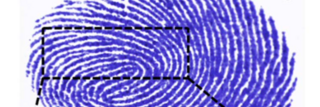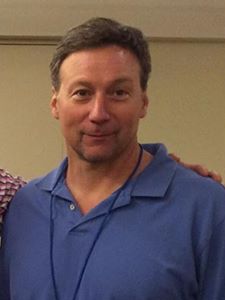Related Research Articles

The polymerase chain reaction (PCR) is a method widely used to make millions to billions of copies of a specific DNA sample rapidly, allowing scientists to amplify a very small sample of DNA sufficiently to enable detailed study. PCR was invented in 1983 by American biochemist Kary Mullis at Cetus Corporation. Mullis and biochemist Michael Smith, who had developed other essential ways of manipulating DNA, were jointly awarded the Nobel Prize in Chemistry in 1993.

DNA profiling is the process of determining an individual's deoxyribonucleic acid (DNA) characteristics. DNA analysis intended to identify a species, rather than an individual, is called DNA barcoding.

Forensic science, also known as criminalistics, is the application of science principles and methods to support legal decision-making in matters of criminal and civil law.

JonBenét Patricia Ramsey was an American child beauty queen who was killed at the age of six in her family's home at 755 15th Street in Boulder, Colorado. A long handwritten ransom note was found in the home. Her father, John, found the girl's body in the basement of their house about seven hours after she had been reported missing. She had sustained a broken skull two and a half hours before her death due to asphyxiation; a garrote was found tied around her neck. The autopsy report stated that JonBenét's official cause of death was "asphyxia by strangulation associated with craniocerebral trauma". Her death was ruled a homicide. The case generated worldwide public and media interest, in part because her mother Patsy Ramsey, a former beauty queen, had entered JonBenét into a series of child beauty pageants. The crime is still considered a cold case and remains an open investigation with the Boulder Police Department.

Hair analysis may refer to the chemical analysis of a hair sample, but can also refer to microscopic analysis or comparison. Chemical hair analysis may be considered for retrospective purposes when blood and urine are no longer expected to contain a particular contaminant, typically three months or less.
Forensic identification is the application of forensic science, or "forensics", and technology to identify specific objects from the trace evidence they leave, often at a crime scene or the scene of an accident. Forensic means "for the courts".
The United Kingdom National DNA Database is a national DNA Database that was set up in 1995. In 2005 it had 3.1 million profiles and in 2020 it had 6.6 million profiles. 270,000 samples were added to the database in 2019–20, populated by samples recovered from crime scenes and taken from police suspects. 124,000 were deleted for those not charged or not found guilty. There were 731,000 matches of unsolved crimes between 2001 and 2020.

Patricia Ann Ramsey was an American beauty pageant winner who won the Miss West Virginia pageant at age 20 in 1977. She was best known as the mother of JonBenét Ramsey, a six-year-old child beauty pageant queen who was found dead in her family's home in Boulder, Colorado, on December 26, 1996.

The Forensic Science Service (FSS) was a government-owned company in the United Kingdom which provided forensic science services to the police forces and government agencies of England and Wales, as well as other countries.

Forensic biology is the application of biological principles and techniques in the investigation of criminal and civil cases.
A crime laboratory, often shortened to crime lab, is a scientific laboratory, using primarily forensic science for the purpose of examining evidence from criminal cases.

David Ray Camm is a former trooper of the Indiana State Police (ISP) who spent 13 years in prison after twice being wrongfully convicted of the murders of his wife, Kimberly, and his two young children at their home in Georgetown, Indiana, on September 28, 2000. He was released from custody in 2013 after his third trial resulted in an acquittal. Charles Boney is currently serving time for the murders of Camm's wife and two children.
Low Copy Number (LCN) is a DNA profiling technique developed by the UK Forensic Science Service (FSS) which has been in use since 1999.

Brianna Zunino Denison was a college student who was abducted on January 20, 2008, from a friend's house in Reno, Nevada. Her body was discovered on February 15, 2008, in a field near a Reno business park after being raped and murdered. A man named James Biela was convicted of the murder.
Rape investigation is the procedure to gather facts about a suspected rape, including forensic identification of a perpetrator, type of rape and other details.
Werner Uri Spitz was a German-American forensic pathologist who worked on a number of high-profile cases, including the investigations of the assassinations of president John F. Kennedy and reverend Martin Luther King Jr. He also testified at the trials of Casey Anthony and Phil Spector, the 1996 civil trial against O. J. Simpson, and consulted on the investigation of JonBenét Ramsey's 1996 death.

Investigating Innocence is a nonprofit wrongful conviction advocacy organization that provides criminal defense investigations for inmates in the United States. Investigating Innocence was founded in 2013 by private investigator Bill Clutter to assist nationwide Innocence Project groups in investigating innocence claims. "Once we have a case that meets our criteria, we'll put private investigators to work on it. A lot of these cases need investigators," said Kelly Thompson, executive director of Investigating Innocence. Prior to his work on Investigating Innocence, Clutter was one of the founders of the Illinois Innocence Project. Investigating Innocence also has a board composed of exonerees that reviews incoming cases.

DNA phenotyping is the process of predicting an organism's phenotype using only genetic information collected from genotyping or DNA sequencing. This term, also known as molecular photofitting, is primarily used to refer to the prediction of a person's physical appearance and/or biogeographic ancestry for forensic purposes.

DNA profiling is the determination of a DNA profile for legal and investigative purposes. DNA analysis methods have changed countless times over the years as technology changes and allows for more information to be determined with less starting material. Modern DNA analysis is based on the statistical calculation of the rarity of the produced profile within a population.
References
- ↑ Low Copy Number DNA Archived 2011-01-03 at the Wayback Machine – nfstc.org
- ↑ Dalén, Love; Göthenström, Anders; Meijer, Tomas; Shapiro, Beth. "Recovery of DNA from Footprints in the Snow" (PDF). Canadian Field-Naturalist. 121 (3): 321–324. Retrieved 2024-08-03.
- ↑ "What is touch DNA?". Scientific American. 2008-08-08.
- ↑ Low Copy Number DNA and The Forensic Institute Archived 2012-09-12 at archive.today
- ↑ Silverman, Mike (27 April 2014). "The strange case of the 'time travel' murder". BBC News. Retrieved 28 April 2014.
- ↑ Anderson, Chris (22 March 2012). "Tyson Case: Attorneys say use of touch DNA to show guilt is rare". Herald Tribune.
- 1 2 Disagreement on What to Call DNA Profiling with Really Small Samples Confuses Courts – Penn State University
- ↑ Cavanaugh, Sarah E.; Bathrick, Abigail S. (2018). "Direct PCR amplification of forensic touch and other challenging DNA samples: A review". Forensic Science International: Genetics. 32: 40–49. doi:10.1016/j.fsigen.2017.10.005. PMID 29059581.
- ↑ Houck, Max; Houck, Lucy. "What is touch DNA?". Scientific American.
- ↑ Hayes, Ashley (21 June 2011). "Prosecutors: Child of fellow Casey Anthony inmate drowned in pool". CNN.
- ↑ Kircher, Travis (8 October 2013). "David Camm Blog: Dr. Richard Eikelenboom and his Touch DNA". WDRB.
- ↑ "DNA clears JonBenet's family, points to mystery killer". CNN. 10 July 2008.
- ↑ Mikkilineni, Rupa (2 December 2008). "Tip line played key role in cracking cold case". CNN.
- ↑ Smith, Peter Andrey (2016). "When DNA Implicates the Innocent". Scientific American. 314 (6): 11–12. Bibcode:2016SciAm.314f..11S. doi:10.1038/scientificamerican0616-11. PMID 27196827.
- ↑ Leary, Mary (2017). "Touch DNA and Chemical Analysis of Skin Trace Evidence". William & Mary Bill of Rights Journal.